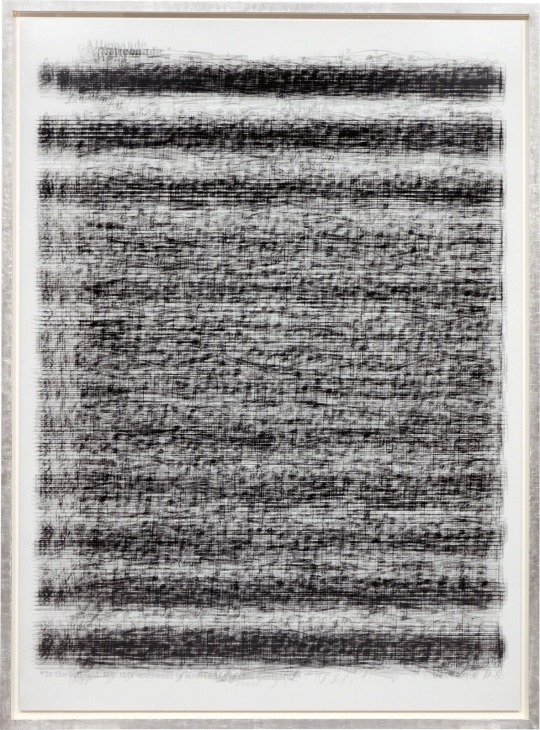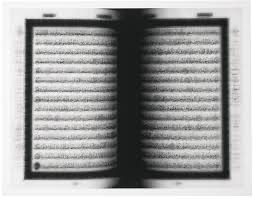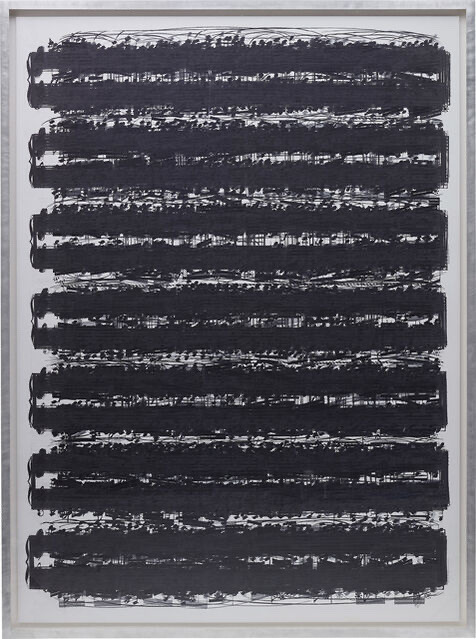#printedasnoise
Explore tagged Tumblr posts
Text
🔁 // Reblogging for archive & echo
Idris Khan’s work sits in the overlap we’re always circling: 🔲 sound as visual residue 🔲 black and white as signal/noise binary 🔲 layering as disruption, memory, and trace
His overlaid musical scores become visual static—dense with repetition, time distortion, and emotional interference. Much like Signal // Noise, they translate what’s heard into what’s seen, compressing experience into image.
We're especially drawn to this idea of disorganised density—where chaos isn’t breakdown but accumulated presence. It echoes tape hiss, cochlear echo, and archival fog.
Khan’s “Struggling to Hear… After Beethoven” feels like a score of the unheard—a kind of printed tinnitus.
Project: Disrupt
Week : 30th Oct - 3rd Nov
Artist research - Idris Khan
I started looking into Idris Khan after Yvonne recommended him to me. Khan takes interest in the multiple ways classical music is interpreted by musicians today. He shows this passage of time in music by layering each music sheet of musicians, such as Beethoven and Bach.



Khan created these pieces through photography, then each image is layered to create the piece.
Khan’s work influences my project as he deals with both sounds of music and layering images, which is what I’ve been looking into also. I love the disorganised look of his pieces above, and I think they relate to the theme ‘disrupt’. I think I could try out photography later in my project, and see what I can create by layering my own images.
Image 1 - ‘Bach… Six Suites for the Solo Cello’ 2006
Image 2 - ‘Struggling to Hear…. After Ludwig van Beethoven Sonatas’ 2005
Image 3 - ‘Every … Page of the Holy Qur’an’ 2004
#signalnoise#idriskhan#processzine#blackandwhiteart#disruptionasform#soundasimage#layeredasgesture#memorythroughmedia#deafprocess#glitchaesthetics#visualresonance#printedasnoise
10 notes
·
View notes
Text
🔁 Reblogged with resonance This brings to mind so much of what Signal // Noise is orbiting — static as memory trace, interference as voice, the unseen architectures of perception. Watkins and Canell tap the liminal field between sound and imprint, translating atmospheric charge into flexi-disc and print. Echoes of my own glitch/studio practice: recording with cochlear imbalance, decoding tactile residue, listening to the silence inside the noise. Signal, misfire, fingerprint. More soon from the Process Zine lab… → processzine.org

Robin Watkins and Nina Canell: Heliogram, a limited edition flexi publication that combines field recordings by Robin Watkins with a suite of prints by Nina Canell. In their own ways, they consider the ecological effects of static electricity by tapping into a field of intermingling energy signatures. At Printed Matter
#signalnoise#processzine#heliogram#fieldrecording#electrostatics#deafprocess#soundasresidue#printedasnoise#glitchlab#liminalmedia#tactilelistening
5 notes
·
View notes